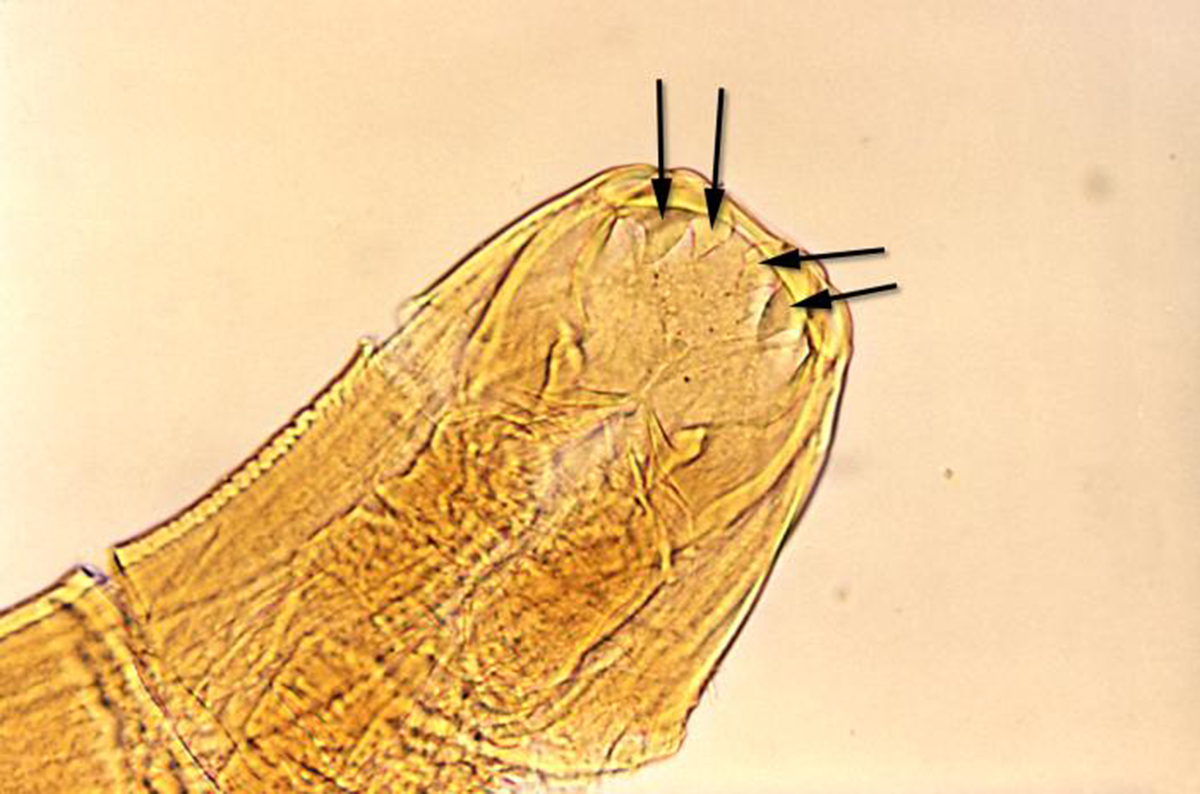Table of Contents
Parasites — organisms that satisfy their needs at the expense of their hosts, often with very serious consequences — comes in many shapes and sizes. These parasites literally make your skin crawl, feed on your body, or silently damage your health while they're gestating. Keep your eye out for these fellows!

Hookworm
Up to 740 million people are infected with hookworm, an intestinal parasite, worldwide. Other mammals, such as dogs and cats, can also be hosts. Infection usually occurs after someone comes into close contact with the fecal matter of someone who already had hookworm — due to poor sanitary conditions or because feces were used as a fertilizer. Mature female hookworms are real egg factories, as some release up to 30,000 a day! These eggs are expelled through feces, and hatch into larvae that will begin their search for another host.
Fortunately, hookworm infection is quite rare in developed western nations these days. If you don't walk barefoot around communal unsanitary toilets, you're quite unlikely to catch this creep. That's just as well, because the hookworm comes with a large "ick factor": larvae actually penetrate the skin and wiggle all around the body before finding and entering the intestines. Once there, they will hook onto its lining with their creepy teeth.
Hookworm infection does appear to have one redeeming feature, and that's the fact that it frequently remains symptomless in those with a small number of worms. Is that really so great, though? Not if you consider that this parasitic infection can silently wreck your health. People with severe infections may lose their appetite, rapidly lose weight, and suffer abdominal pain, fatigue and anemia. If the infected person is a child, their physical development can be impacted dramatically. Thankfully, hookworm can be eliminated with medication quite easily.
What? Yes, "helminthic therapy" — in this case a voluntary hookworm infection — is an alternative remedy that's gaining popularity. Crohn's Disease, Irritable Bowel Syndrome, Ulcerative Colititis and asthma are all among conditions for which some people infect themselves with hookworm. These sterile parasites can be ordered off the internet.
Pork Tapeworm
The pork tapeworm is made up of long, flat segments. It tends to be between two and three meters long, but can reach up to eight meters in some cases! A hermaphrodite, the pork tapeworm doesn't require a mate to reproduce and instead practices self-fertilization within more mature segments of its body. Eggs, expelled through feces, are ingested by the host and then reach their next developmental stage: oncospheres. These wind up in muscles, entering the bloodstream and looking for intestines once they are developed enough, and growing into mature worms.
See Also: Intestinal Infections with Tapeworm Parasites
An intestinal tapeworm infection can seriously harm your health — think anemia, nutritional deficiencies, fatigue, abdominal pain, a general feeling of weakness, diarrhea, and other symptoms. That's bad enough in itself, but pork tapeworms can also end up in other organs, including the eyes, liver and brain, instead. Cysts are a normal part of the worm's life cycle, and they can be life-threatening when they gestate in the brain. This is a common cause of seizures in some developing countries. "Pork tapeworm on the brain" can also cause headaches, back pain, confusion, and fluid build-up in the brain, along with other neurological symptoms and even death. Anti-parasitical medication, anti-inflammatory drugs and surgery may be part of the treatment plan in this case. Meanwhile, steer clear of undercooked pork!
- Photo courtesy of Prep4md via Flickr: www.flickr.com/photos/prep4md/2772967912
- Photo courtesy of Prep4md via Flickr: www.flickr.com/photos/prep4md/3026939917
- autoimmunetherapies.com/candidate_diseases_for_helminthic_therapy_or_worm_therapy/helminthic_therapy_evidence.html
- en.wikipedia.org/wiki/Cysticercosis#Signs_and_symptoms
- www.cdc.gov/parasites/acanthamoeba/gen_info/acanthamoeba.html
- www.cdc.gov/parasites/myiasis/faqs.html

